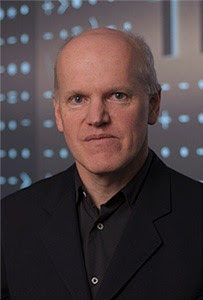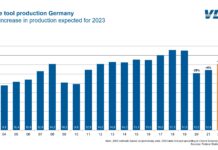 JEC Group proudly announces that Prof Mark Goulthorpe, Associate Professor at the MIT Department of Architecture, teaching in undergraduate, graduate and post-graduate programs, and undergoing research in digital design and fabrication will serve as the guest keynote speaker for the Future of Composites in Construction Show & Conferences in Chicago at McCormick Convention Center, the premier convention facility in North America, Downtown Chicago, IL, on June 21, 2017.
JEC Group proudly announces that Prof Mark Goulthorpe, Associate Professor at the MIT Department of Architecture, teaching in undergraduate, graduate and post-graduate programs, and undergoing research in digital design and fabrication will serve as the guest keynote speaker for the Future of Composites in Construction Show & Conferences in Chicago at McCormick Convention Center, the premier convention facility in North America, Downtown Chicago, IL, on June 21, 2017.
JEC Group is launching the Future of Composites in Construction Show & Conferences, a brand-new event, 100% End-User oriented and dedicated to one of the most promising composites market segments: Building & Civil Engineering, the third largest growing market for the U.S. Composites Industry.
Goulthorpe is currently Head of the new Design Stream in the SMArchS program. Current research centers on robotic fabrication and a variety of composite fabrication methodologies, as well as a new iteration of the dynamically reconfigurable HypoSurface. Mark is also a practicing architect, acting as creative and technical director of 3 groups of networked inter-disciplinary teams: dECOi Architects, HypoSurface, and Zero+.
“Mark Goulthorpe’s vision makes him the perfect choice to support this endeavor and actively take part in substantially expanding and generalizing the use of composite materials in the building and infrastructure fields”, says Nicolas Baudry, North America Shows Director at JEC Group.
The building industry is facing a productivity and affordability crisis in developed and developing markets, largely due to its inability to embrace new material-processing: over the past 30 years the building industry has decreased in productivity (despite a digital revolution) where the manufacturing sector has effectively doubled productivity. Evidently buildings face particular technical challenges, especially fire retardancy, adaptability and longevity; but many of these issues have nascent solutions developed in other sectors. However, there are no official industry leaders in the building industry to take a decisive first step; and the thought-leaders (architects and engineers) are caught in a project-by-project procurement logic that doesn’t suit sustained research and development drives. So, there is a profound need for the polymer industries to initiate comprehensive building-focused research to devise a range of emphatically-beneficial composite buildings, materials and methods that offer versatile, economical, code-compliant solutions.



